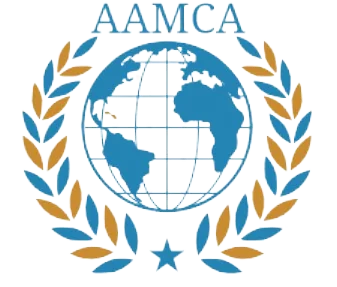Understanding Overtooling: The Root Causes
Overtooling in IT environments is a pressing issue that arises from several interconnected factors. At the forefront, rapid advancements in technology create an environment where organizations feel compelled to adopt the latest tools and solutions to remain competitive. This eagerness to incorporate new technologies often results in an accumulation of tools that, while designed to optimize processes, can inadvertently lead to increased complexity. Companies frequently prioritize the adoption of cutting-edge applications rather than critically assessing existing tools, which can perpetuate a cycle of overtooling.
Another significant contributor to overtooling is the intricate nature of modern IT environments. Organizations often deploy a diverse range of systems to meet various business needs, such as managing data, ensuring security, and facilitating communication. As these environments grow in complexity, the temptation to add new tools to address emerging challenges becomes more pronounced. This approach can lead to redundancy and inefficiency, as multiple tools may serve overlapping functions. Consequently, the original purpose of tool integration is overshadowed by the sheer volume of applications in use.
The ever-evolving threat landscape also plays a critical role in amplifying overtooling tendencies. As cyber threats become more sophisticated, companies are inclined to acquire additional security solutions to fortify their defenses. However, instead of consolidating their security efforts and investing in comprehensive tools that replace outdated ones, organizations often resort to layering new solutions upon existing infrastructures. This approach further complicates management and may reduce the overall effectiveness of security measures.
In recognizing these root causes, organizations can take proactive steps to address overtooling, allowing for a more streamlined and efficient IT environment. By thoughtfully evaluating both new and existing tools, companies can better align their technological investments with their strategic objectives.
The Consequences of Tool Proliferation
The proliferation of tools within IT environments can lead to several adverse effects that ultimately hinder overall effectiveness. When organizations overtool, they often introduce layers of complexity that complicate system management and data oversight. This complexity can create significant hurdles in the integration and interaction of various tools, resulting in inefficiencies that may diminish the intended benefits of automation and optimization.
One key consequence is the increased difficulty in managing multiple systems, as IT professionals may find themselves juggling various software interfaces and platforms. As the number of tools escalates, the amount of time that employees spend navigating these diverse systems can lead to diminished productivity. Instead of focusing on strategic tasks that drive innovation and growth, employees become bogged down in routine maintenance and operational firefighting. This reality can foster frustration and anxiety among staff, ultimately affecting their mental well-being.
Moreover, the financial implications of tool proliferation are daunting. Organizations may incur excessive costs associated with licensing fees, maintenance, and training associated with numerous software applications. These expenses can quickly accumulate, diverting resources away from critical business functions and investments. Additionally, as the tool ecosystem expands, so does the attack surface for potential cybersecurity threats. Heightened security risks arise from the integration of numerous tools, which can create vulnerabilities if not managed properly. Increasingly, organizations must allocate time and budget to ensure that their cybersecurity measures are robust enough to protect against the wide range of tools in use.
Consequently, organizations must carefully evaluate the tools they implement within their IT environments. By understanding and addressing the consequences of tool proliferation, businesses can work toward a more streamlined and efficient operational model that enhances productivity while maintaining security and governance.
The Security Risks of Overtooling
The proliferation of tools in IT environments, while aimed at enhancing productivity and streamlining operations, often results in significant security risks. Overtooling manifests as an array of security vulnerabilities that stem from the complexity of managing numerous, often disconnected tools. Each tool introduced to the environment can create an additional point of entry for unauthorized access, thereby expanding the attack surface that potential hackers can exploit. In fact, according to recent studies, organizations that utilize more than ten distinct security tools see a reported 50% increase in security incidents compared to those using fewer tools. This alarming statistic underscores the very real threats posed by an excess of tools.
When tools operate in silos, data may not be communicated effectively between systems, leading to gaps in security protocols. For instance, if a threat detection tool is not properly integrated with incident response mechanisms, a security breach may go unnoticed or take longer to address, exacerbating the impact of the incident. Moreover, inconsistent security practices across numerous platforms can confuse employees, many of whom may not be fully aware of how to utilize each tool effectively. Such confusion can result in misconfigurations that further compromise security integrity.
The cumulative effect of these challenges can be severe, with statistics indicating that companies with an overabundance of security tools are not only more prone to breaches but also suffer larger financial losses and reputational damage when incidents occur. In light of these security implications, it becomes increasingly vital for organizations to streamline their toolsets, ensuring that each tool is purpose-driven and effectively integrated. A strategic approach to tool selection and integration can mitigate risks, enhance visibility, and ultimately fortify an organization’s security posture amidst the chaos of overtooling.
Towards a Solution: Achieving Clarity Through Integration
The challenge of tool chaos in IT environments necessitates a strategic approach focused on integration rather than mere addition. As organizations proliferate their toolsets in an attempt to address various operational needs, they often find themselves grappling with the complexities that arise from this proliferation. To overcome these challenges, centralizing visibility across tools emerges as a vital strategy. By establishing a unified interface through which all tools can be monitored and managed, organizations enhance their ability to identify potential threats and vulnerabilities in real time.
Centralized visibility offers significant advantages for threat identification, enabling IT teams to obtain a comprehensive view of the operational landscape. This holistic perspective is crucial for recognizing patterns and anomalies that might otherwise go unnoticed within fragmented systems. Furthermore, the need for deep observability cannot be overstated. It allows organizations to delve into application performance and infrastructure health, ensuring that they can detect underlying issues before they escalate into larger problems. Emphasizing deep observability equips IT teams with the insights necessary to understand how their systems interact and where vulnerabilities may arise.
Incorporating proactive threat management into the operational framework is another critical component of overcoming tool chaos. By shifting from a reactive to a proactive stance, organizations can deploy automated solutions that not only alert teams to potential threats but also initiate remedial actions without delay. Automation plays a pivotal role in streamlining operations, as it reduces noise generated by excessive alerts and notifications, allowing IT professionals to focus on high-priority tasks that demand their expertise. By embracing integration and automation, organizations can effectively simplify their IT operations and reduce the burden of tool chaos, fostering an environment conducive to innovation and growth.




